In a Nilgiri forest cloaked with moss, the adorable and confiding Black-and-Orange Flycatcher sets the woods — and your imagination — aflame
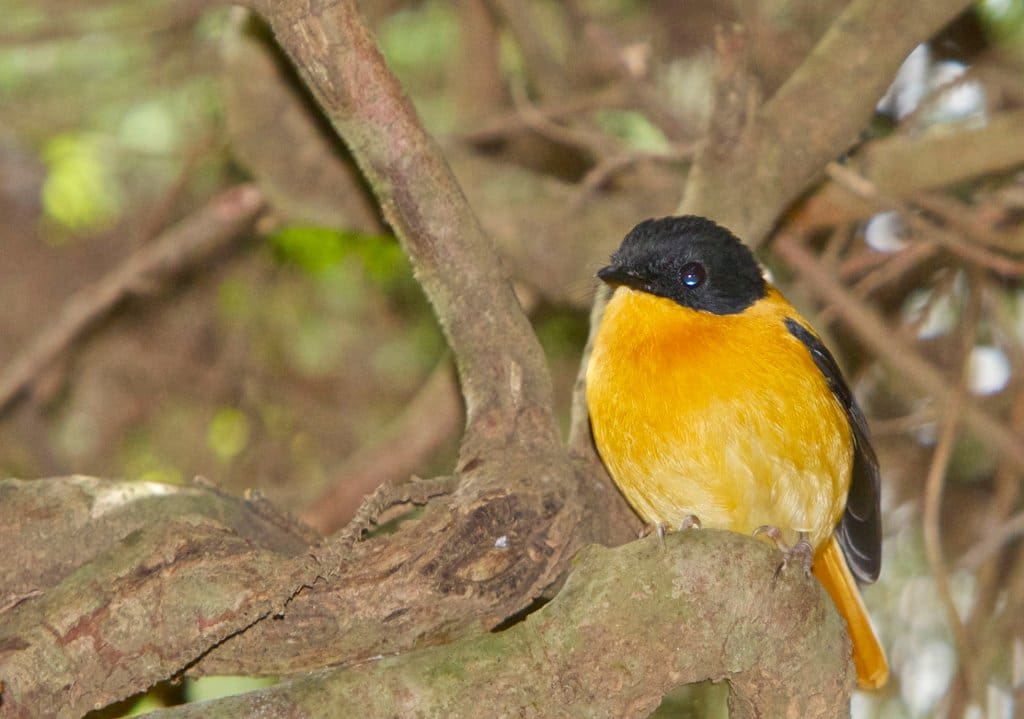
When I was fifteen I had the good fortune of spending the best part of a summer vacation in the Nilgiris. My mother had a bunch of far-flung but warm-hearted relatives who stayed on a tea plantation about 20 kilometres before Ooty up the road from Gudalur. They had a dog, a cat, numerous amorous if somewhat incestuous chickens, and a cornucopia of a kitchen tucked into a tiny shack of a house that accommodated all of us as only a home warmed by love could.
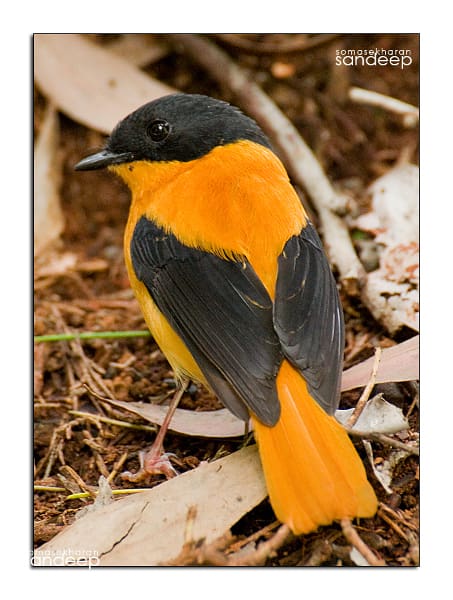
I spent the hours between meals peering beneath tea bushes with the exuberance of an artless voyeur, or gazing for hours at vigilant Long-tailed Shrikes, Pied Bushchats and Hoopoes perched upon posts, pillars and electric lines. I chased breathlessly after noisy flocks of Hill Mynas hoping for a clear view of their banana-yellow eye wattles. Ever so often, I wandered to the slashed-and-burned verge of the tea garden, beyond the thickets of eucalyptus and black wattle, where the forest thrived with a vengeful luxuriance. Here, rosefinches overstaying their spring sojourns bickered with Nilgiri Flycatchers blue as bits of fallen sky even as Nilgiri Laughing-thrushes made breathless conversation in the understorey.
One much-awaited excursion was to the estate guest-house bungalow, a relic of English aristocracy that loomed like a Kiplingian vision among well-tended flower beds and manicured lawns overlooking the wretched labour lines. It was all dainty extravagance in eaves and gables, wood and wicker, with white painted trellises encrusted with dark-green ivy and windowsills aflame with potted geranium. In the garden were rows of pale-mauve-and-pink hydrangea and beds of orange nasturtium, gerbera, dahlias and rock gardens of cacti, most noticeably a whorl-leaved succulent the gardener called Ooty Rose. Inside the bungalow Persian carpets languished on waxed wooden floors, watched over by framed prints of Swiss landscapes and bric-a-brac, all well preserved since nobody lived here for most of the year.
Bored and impatient for the promised walk in the woods, I wandered into the garden, which was infinitely more inviting, and followed a skulking laughing-thrush down a winding pathway fringed with ferns.
I walked some fifty feet down the path, catching the dapple of tree shadows from a four-o-clock sun. Here the flagstones had worn away and the undergrowth had reclaimed the path enthusiastically. A dense copse of wattle announced the end of the path, and here it was swallowed by a stream that chuckled softly among thick clusters of ferns. A white-browed fantail flitted at my approach, its tinkling song like the unstringing of wayward pearls. I was alone enough to want to look over my shoulder, yet I did not feel unsafe. Though the bungalow was hidden from view, the voices of its awestruck admirers carried to me.
Something stirred in the wattle clump ahead. Stirred is a weak analogy; it seemed to ignite into a fireball. In colours unimaginable on a bird — flaming orange and jet black — it glowed as if it had ingested a sunbeam. It reached forward, pecked at the stump and stared at me with nonchalance. Scarcely breathing, I reached for my Russian-made binoculars, then just a few months old but already trusty. By the time I fumbled with the straps and focused, the bird had vanished.
That evening I consulted my (then brand-new) 1989 edition of Salim Ali’s The Book of Indian Birds. The illustration left too much to the imagination, but there was no doubt that I had seen the Black-and-Orange Flycatcher (Ficedula nigrorufa) for the first time. Two days later, on a visit to the famous and well-visited Botanical Garden, I was reacquainted with my newfound catch. This time the views were long and luxurious. I drank in the details as I if were beholding some forest spirit — the inquisitive, bead-like eyes, the bill tufted with a puff of whiskers, the furry-soft burnt orange alternating with soot-black that turned incandescent in the sun. The little featherball hopped close enough to touch, yet eluded my slightest advance. I watched it for nearly 15 minutes before being pulled away by impatient cousins to an elaborate lunch of biriyani, laid out on mats and leaf-plates under a cypress tree (I remember very well that we cleaned up — and some stray dogs ate the bones).
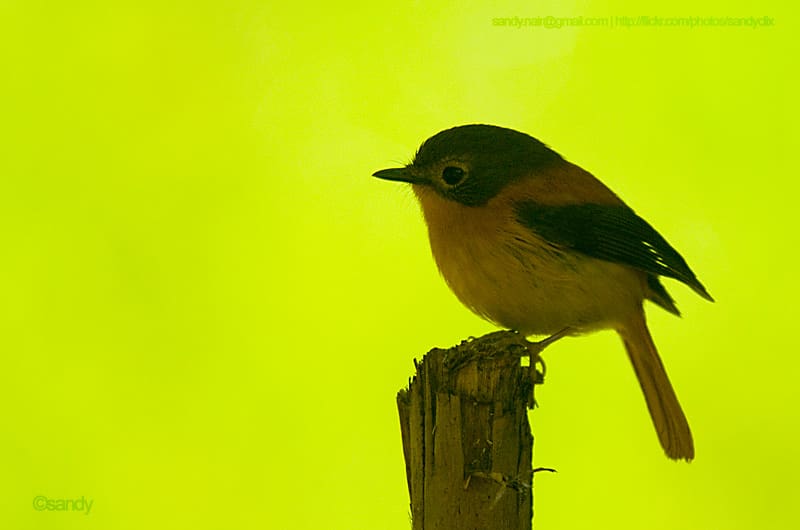
Back on the plantation, I never sighted the bird again, nor did I see it in the secondary forests that grew by their verge. Later I learned that it inhabits high-altitude regions of the Nilgiris and other parts of the high Western Ghats. The Botanical Garden, ranging in elevation from 2,250 to 2,500 metres (7,382 to 8,202 feet), fit the description well.
My next trip to the Nilgiris was two decades later, in January 2011. I stayed with my friend Siddhartha at a resort near Emerald, where he worked then. I had underestimated the Nilgiri winter and was quite unprepared for the morning temperature, which hovered around 7 degrees Celsius. So, when he told me rather jubilantly that he had seen a Black-and-Orange Flycatcher in the wattle grove outside his quarters, I regarded him dourly and said something unkind. Breakfast warmed me up and so did the sun, which shone reluctantly through blankets of mist.
The flycatcher didn’t show up. We set out for Kolaribetta (approximately 8,629 feet) early on the bone-chilling morrow in a left-hand drive Willys, ably (and I must say enviably) piloted by my good friend. Accompanying us was a local forester whom Sid had befriended. He served as philosopher and tour guide for the morning’s outing, which proved sensational. A leopard crossed our path while Sid and the forester were looking the other way. On our return drive through a patch of poorly travelled secondary forest, a flicker of orange flitted across the road and came to rest upon a fallen log. Sid braked, I wheeled around and the forester nearly fell out of the front passenger seat. Behind us the Black-and-Orange Flycatcher regarded us with indifferent curiosity, allowed us a long and profitable look, and then departed uphill into the murky forest tangled with broken sunlight. I managed some hurried shots in low light, none of which merit publication here. Yet, I was jubilant, having encountered the bird again after 20 years.
The next morning, my last of that unforgettable weekend, Sid and I returned from a very engrossing combing of the patch of shola behind the estate. Just the previous evening we had chanced upon a Dusky Striped Squirrel (Funambulus sublineatus), a very rare and elusive resident of the Western Ghats. We had also seen fresh leopard scat and evidence of another, smaller felid. Add to that some lovely birding, spent within mere metres of Nilgiri Laughing-thrushes, Hume’s Warblers, Nilgiri Flycatchers and Black Bulbuls, all the while watched over by whooping Nilgiri Langurs.
We walked back satisfied with our morning’s work, chatting noisily now that we had left the shola and entered the wattle grove. Just then, the Black-and-Orange Flycatcher appeared, perching astonishingly close for me to compose neither my wits nor my camera. In the end, failing miserably to focus, I gave up and allowed the thrill of birdwatching to preside over that of photography. Again, whiskers puffing, the little jewel looked me in the eye with studied interest, then vanished into the undergrowth where a barking deer had set off an alarm, and langurs had taken it up excitedly in the treetops. Maybe the leopard was afoot.
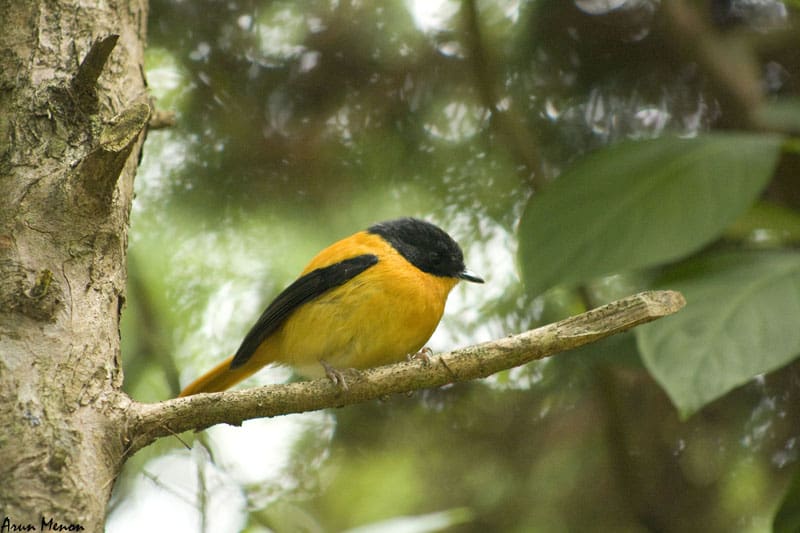
In December last year, when Andy, Arun, Sandy and I spent a weekend exploring Mudumalai and Masinagudi, we made an unplanned side-trip to Ooty. Sandy, who had charted the Botanical Garden’s birding zones on numerous trips during his residency in Mysore, led us straight to the spot where we were likely to see it. Sure enough, just after we had lingered long and abandoned all hope, salvaged only by extraordinary views of a Crested Goshawk, the little fellow showed up to warm our hearts. It was a male – with a jet-black head and bright orange plumage (females, such as the first one I saw on the way down from Kolaribetta, have a conspicuous eye-ring and are much duller, with the black parts faded to a dull grey and the orange watered down to a rather lacklustre rufous). With three trigger-happy Ogres in optical pursuit of the bird, I relaxed. The bird was so close at times and so deliciously beautiful that I could have reached out and popped it in my mouth like one of those gaudy Arya Bhavan desserts.
Arun and Andy were particularly enthusiastic for to them this encounter was a lifer — a lifetime first sighting, for those unfamiliar with birding lingo. We watched it as long as it allowed us, all the while cognizant of the fact that the Black-and-Orange Flycatcher was a rarity, and diminishing in the wild. Outside of its protected haunts, its numbers have fallen alarmingly as vast tracts of forest have been felled to satiate human greed. This planned eradication, legitimized as social forestry, has logged, fragmented and deforested its happy hunting grounds, and replaced it enthusiastically with monocultures of eucalyptus, wattle and pine. The IUCN Red List places this bird in the category NT, or Near Threatened. Its survival in the wild is linked to the health of the Nilgiri Biosphere, and the Western Ghats in their entirety.
Talk is cheap. We need to get to work.
Photographs by Anand Yegnaswami, Sandeep Somasekharan and Arun Menon
- TL;DR – Death Stalks Like A Marabou Stork - July 24, 2024
- Dimorphic Egret – Meet this East African mystery bird - June 8, 2024
- Encounter: Northern Treeshrew in Arunachal Pradesh - May 19, 2024

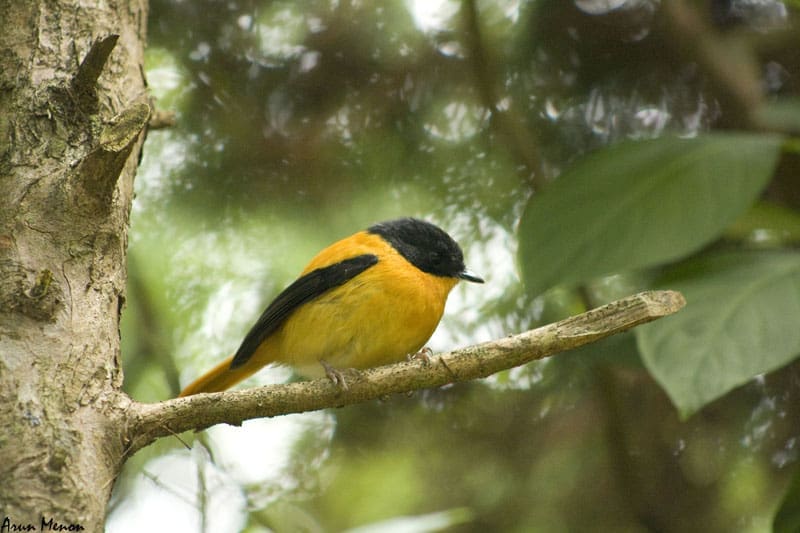
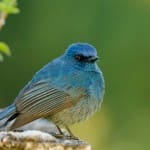
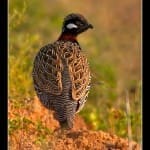
Awesome one Beej, enthralling from the very first word. At the end of a very tiring day this was like having tender coconut on a hot afternoon. 🙂
beautiful post!!! reading it, i felt like i was reading something out of Gerald Durrells!! good work! and of course, as usual, great pics!
Thank you!
Thank you!